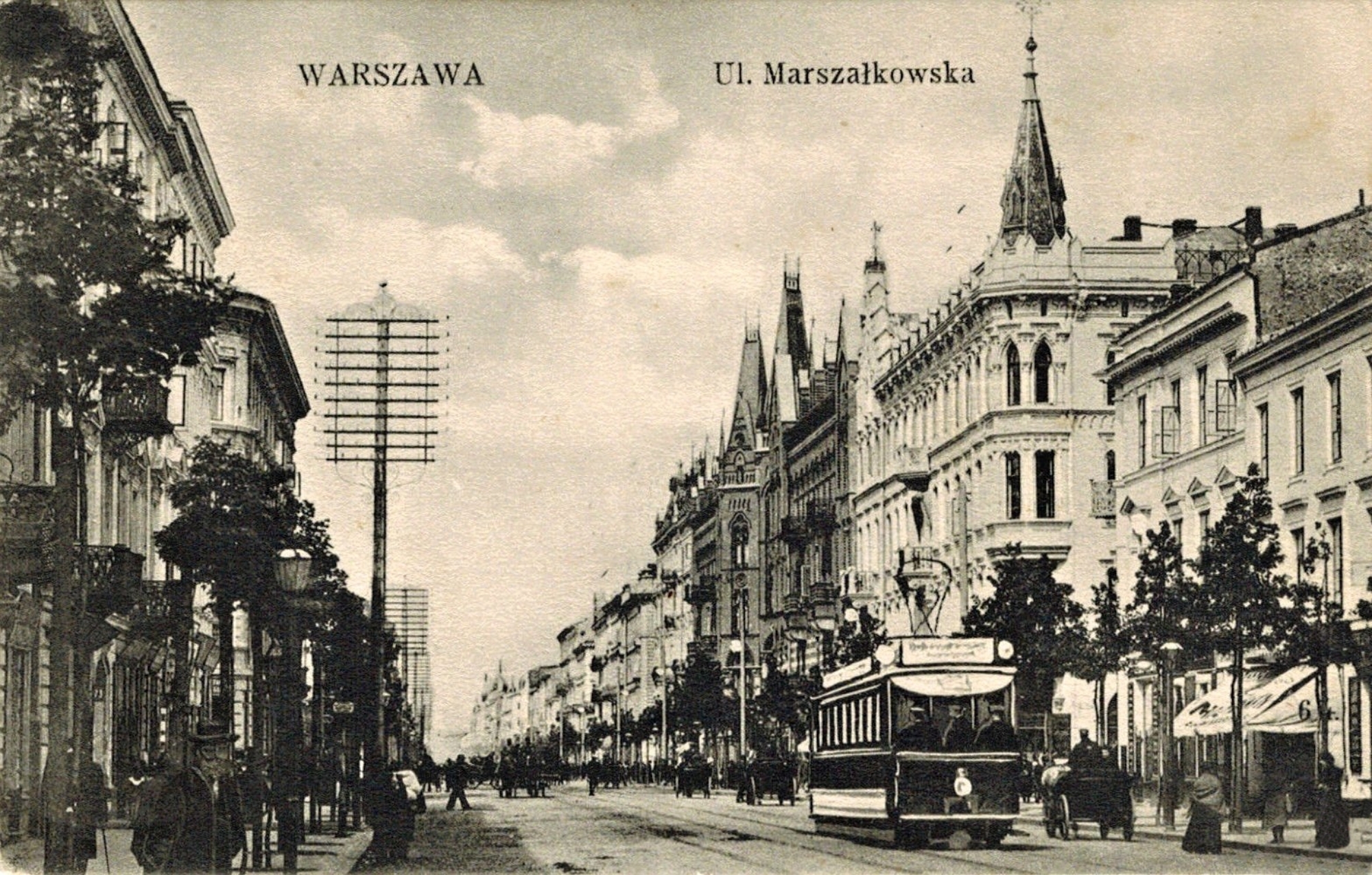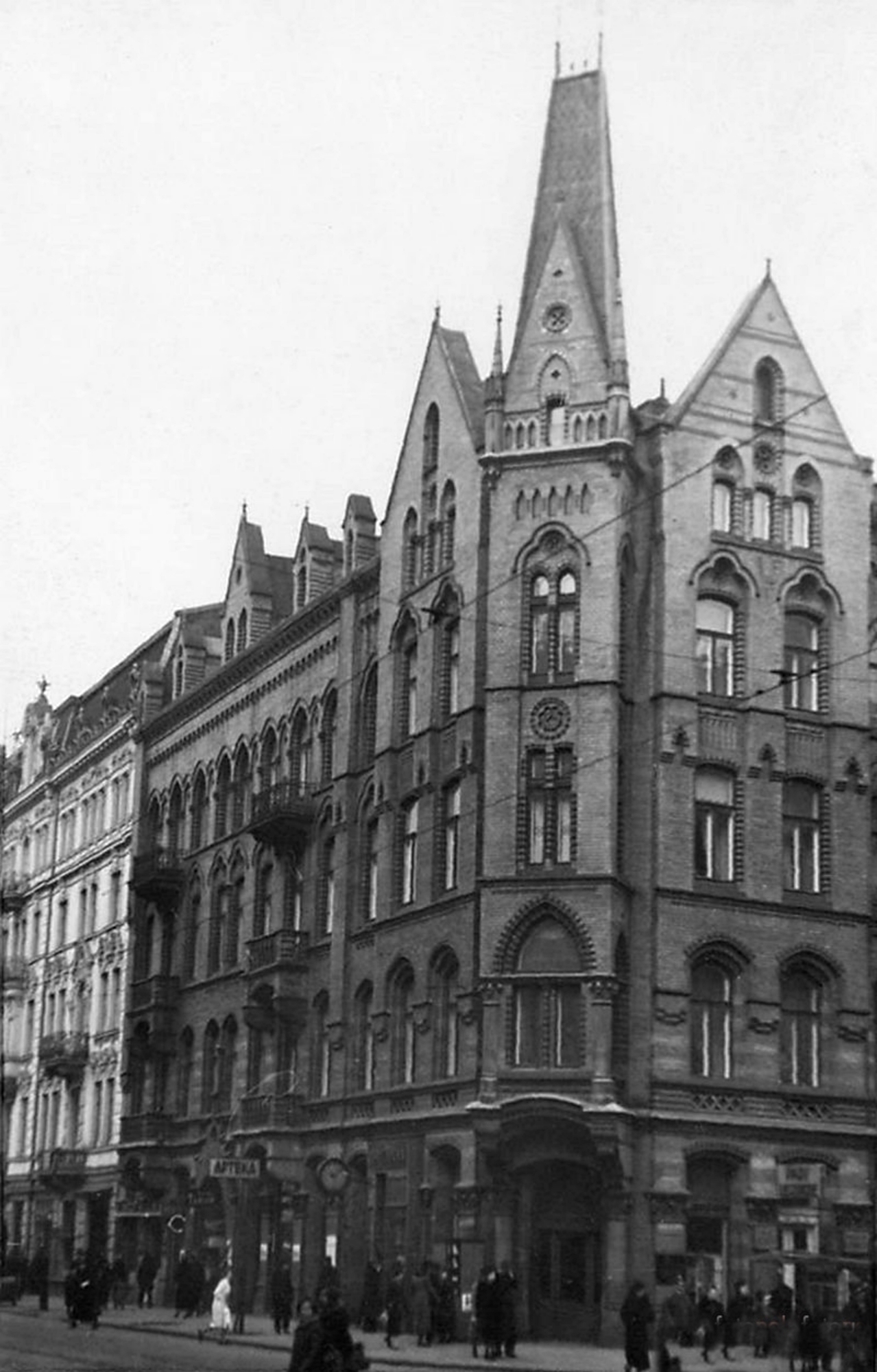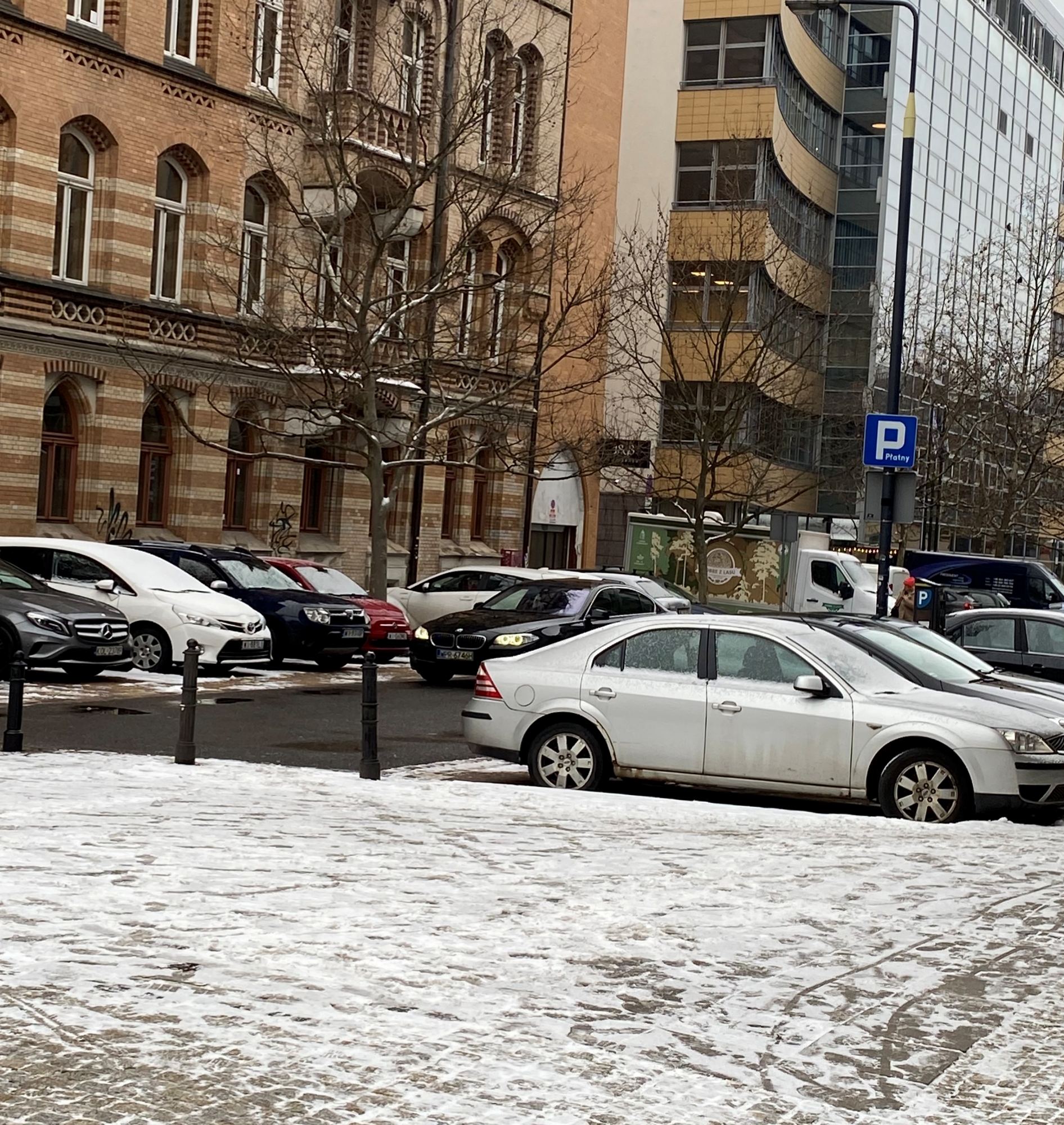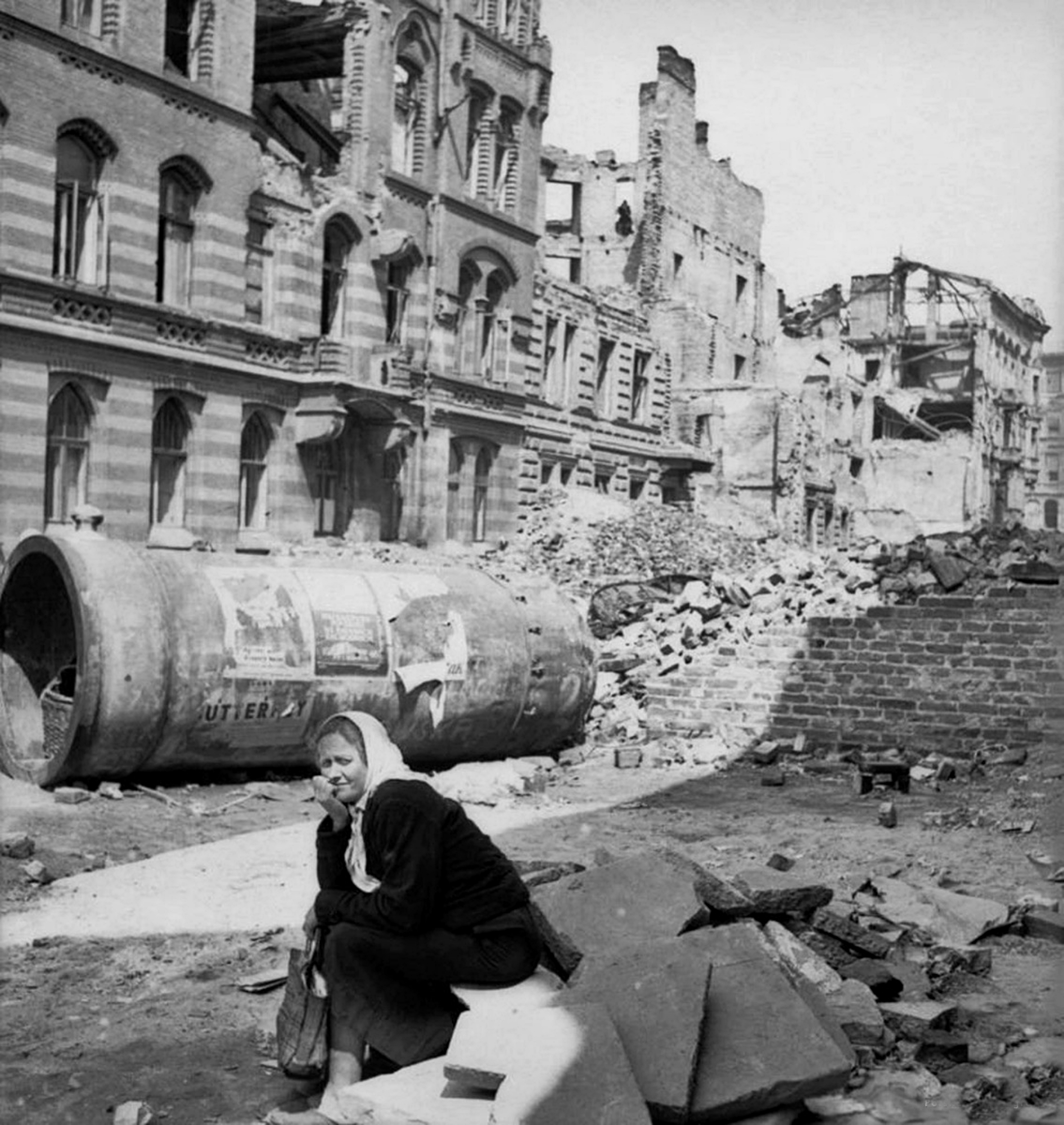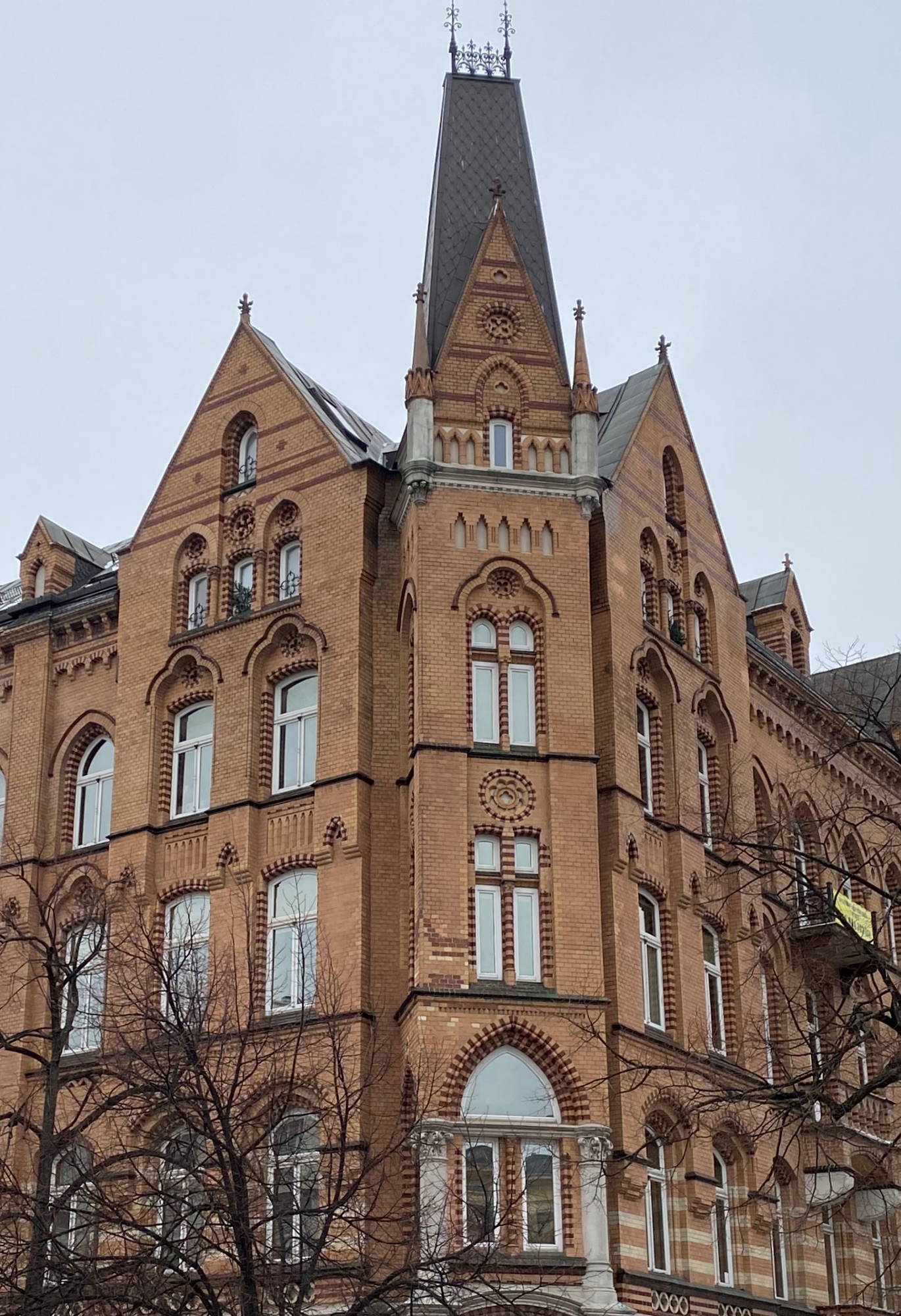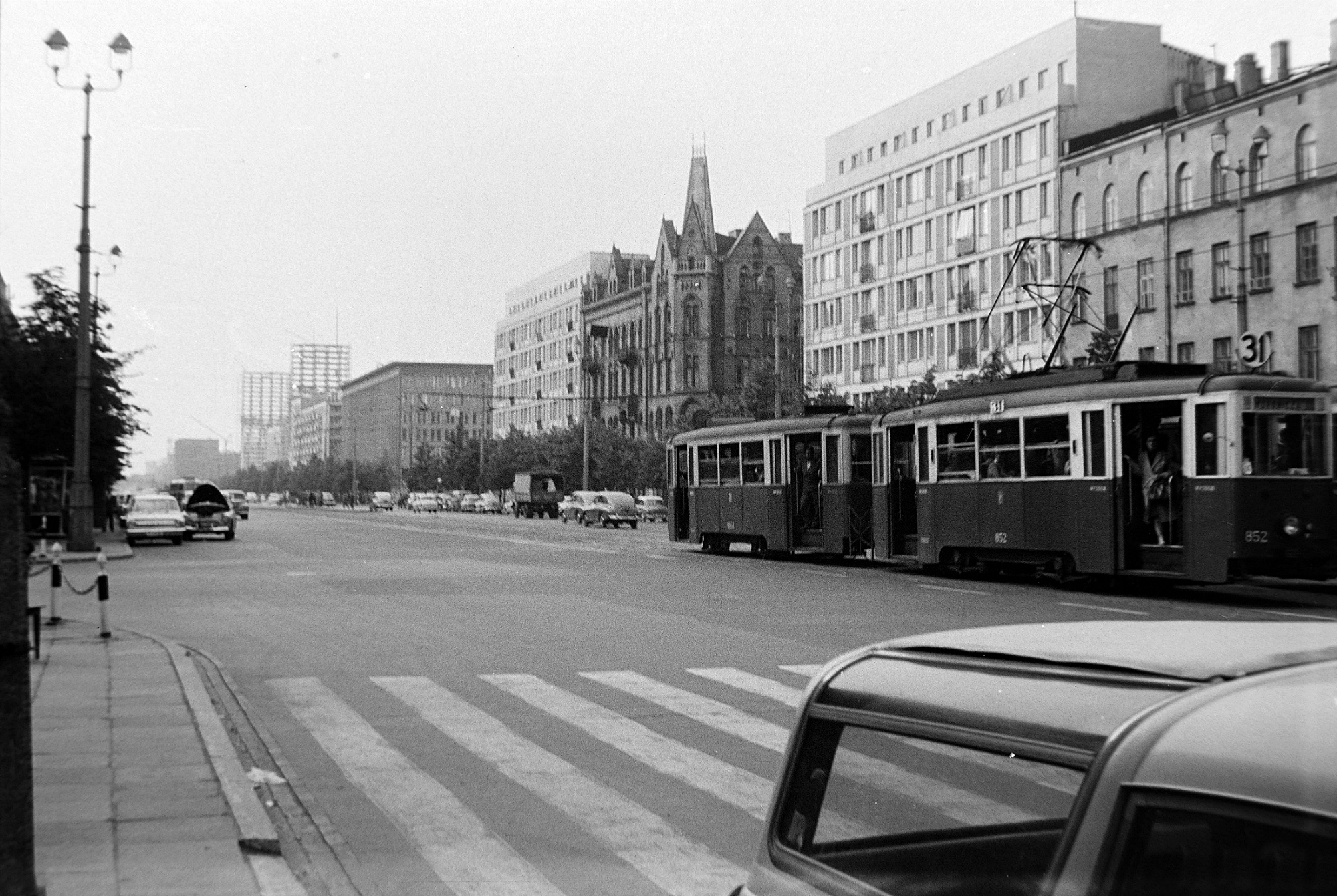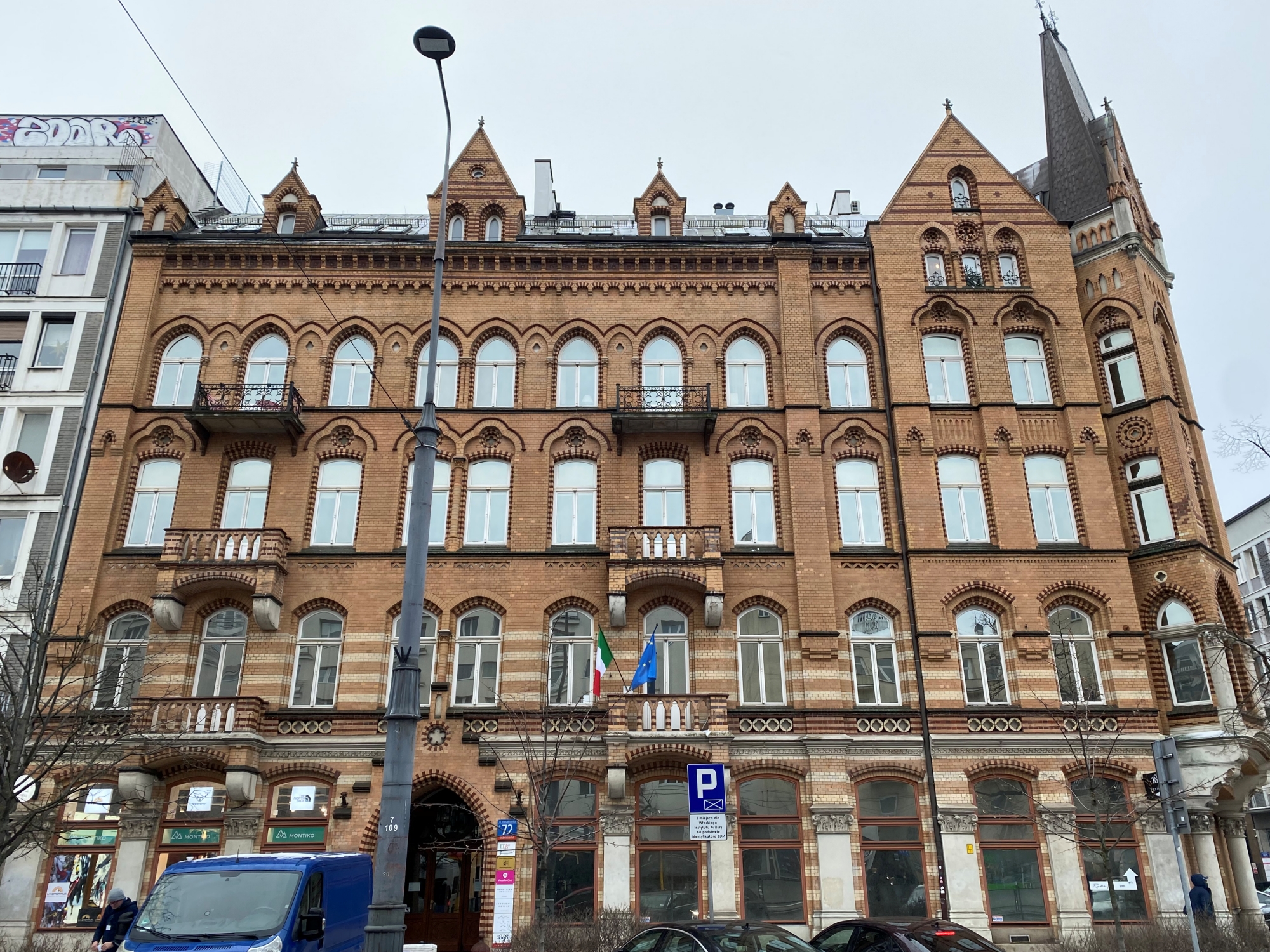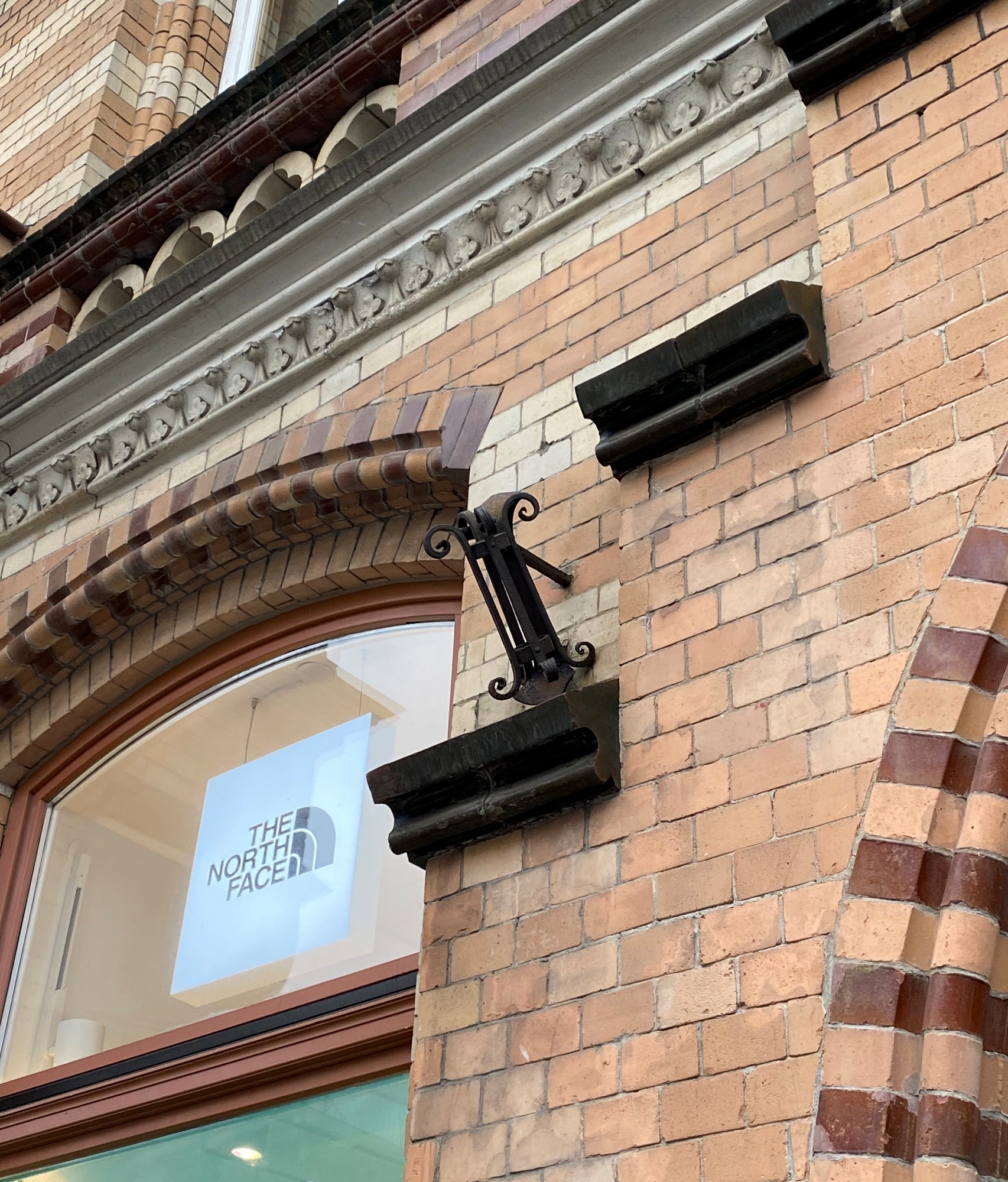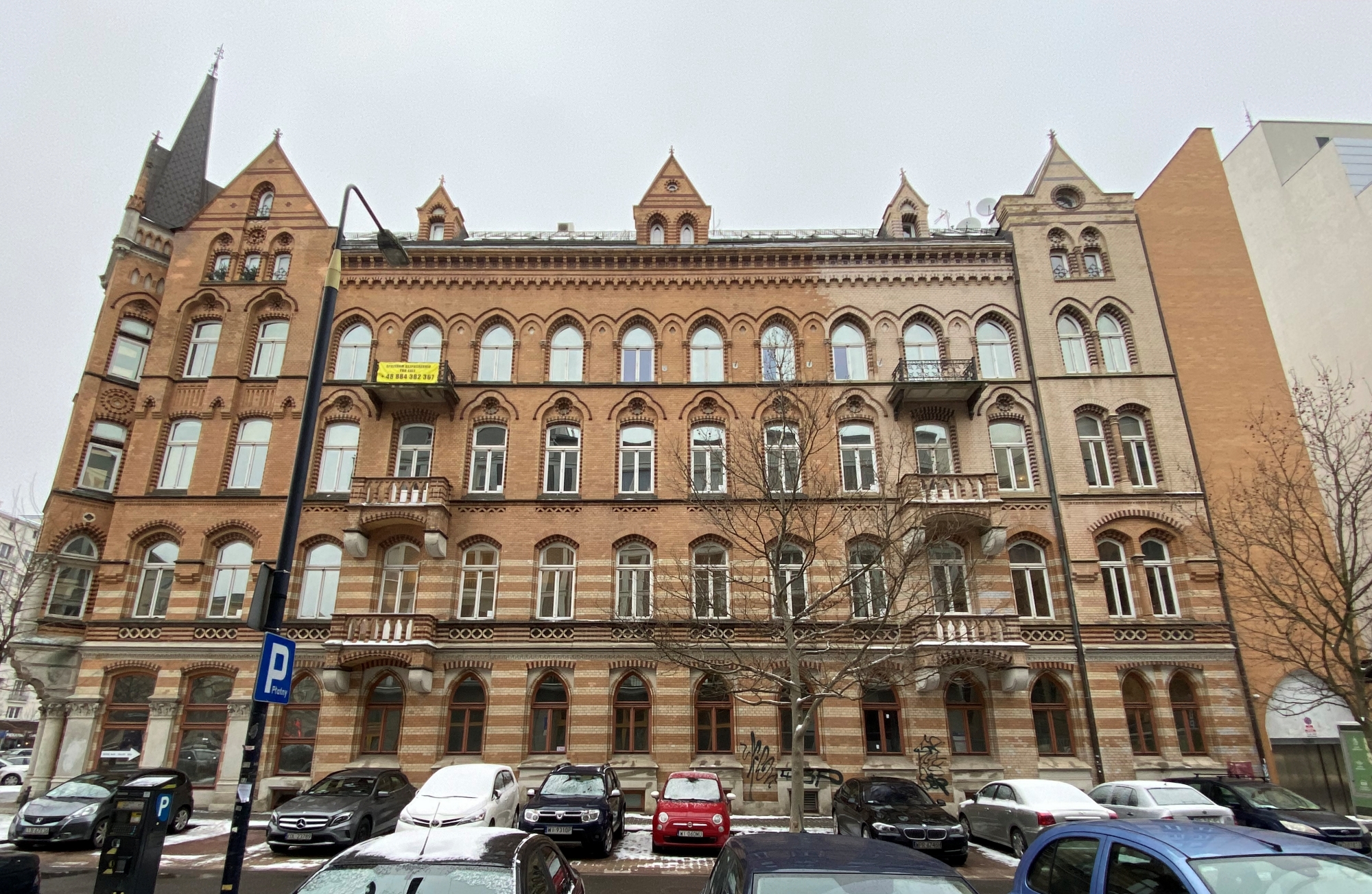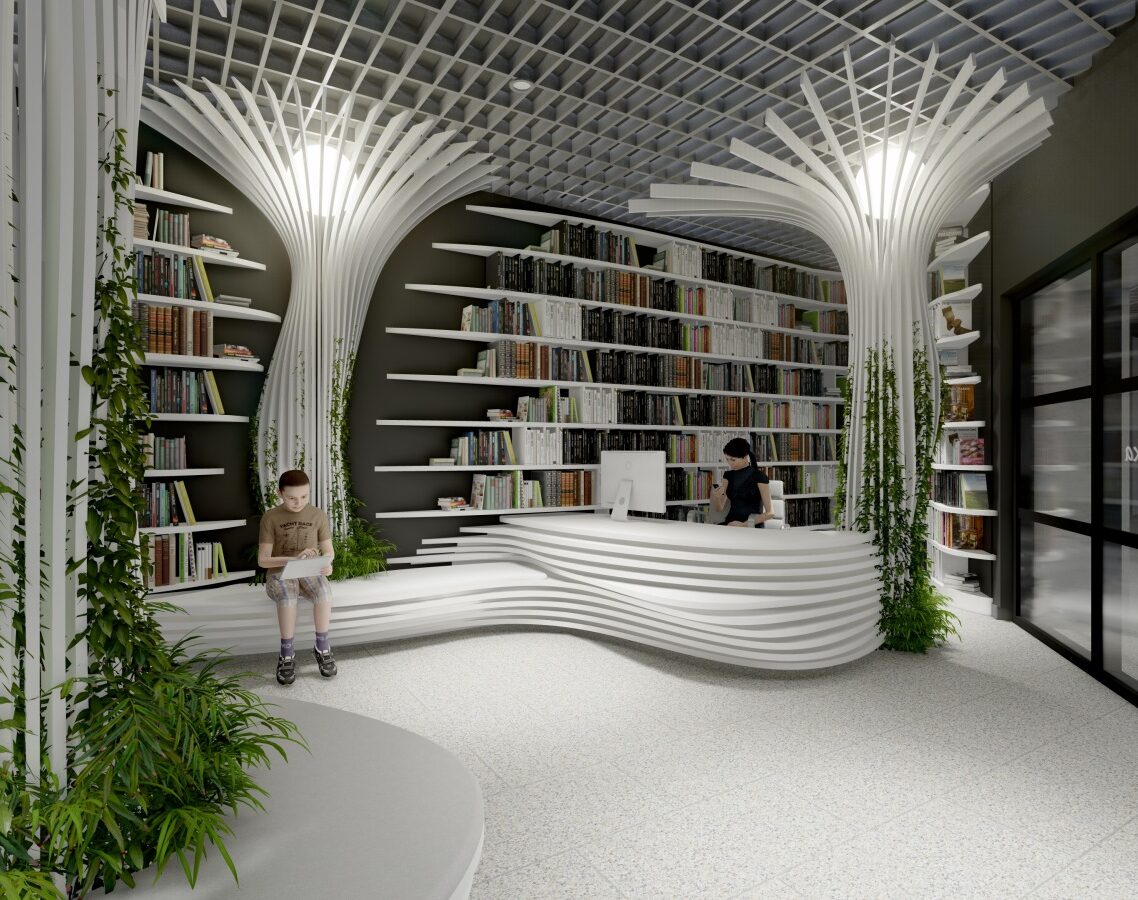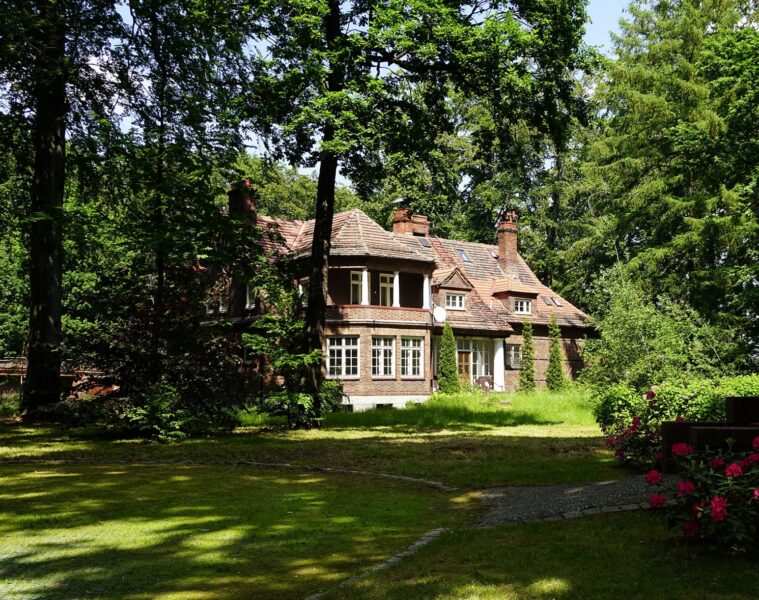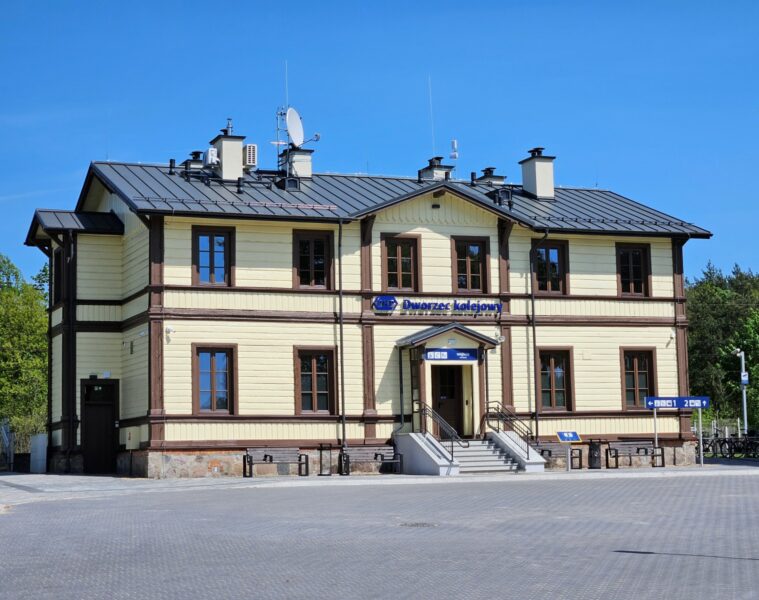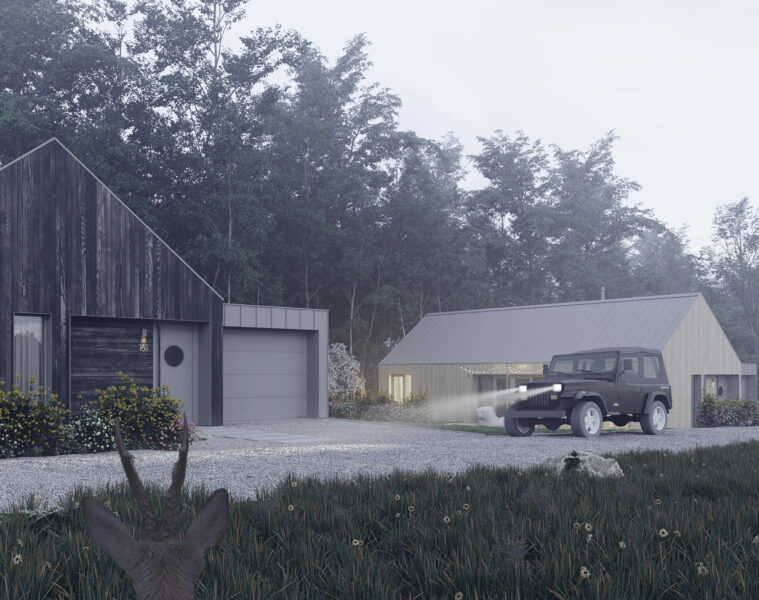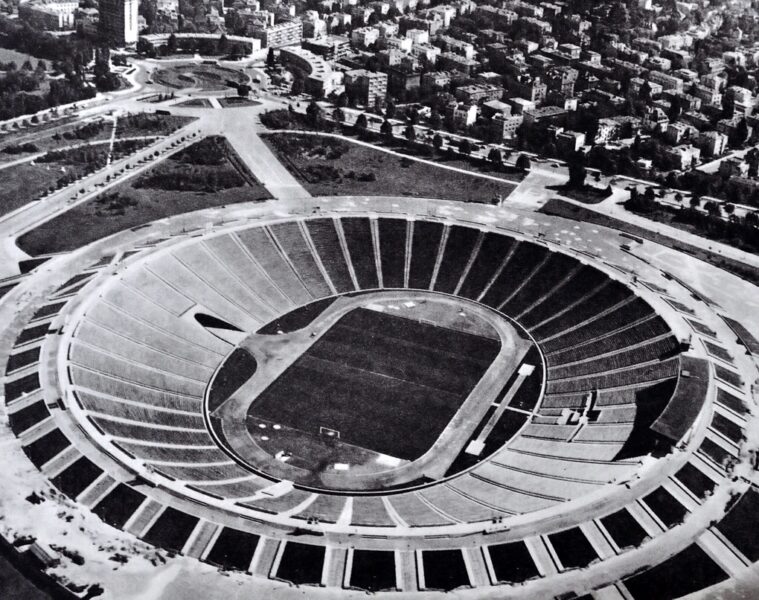The Taubenhaus building at number 72 is one of the handful of surviving pre-war buildings on Marszałkowska Street and one of the most impressive in all of Warsaw. It was built in 1898 to a design by Edward Goldberg. Interestingly, opposite, on Fr Skorupki Street, there was a twin building. However, this one was never rebuilt after the end of World War II and was replaced by a new construction.
At the beginning of the 20th century, both tenements – due to their prestigious location – housed flats of a very high standard. Only the most affluent residents of the capital could afford them.

The corner building was built in the period of the search for a national style. This style is referred to as Vistula-Baltic Gothic, which gained particular popularity in Mazovia. Its characteristic features include the use of brick as the main building material, facades with towers, the use of pointed arches, masquerades and other architectural details found in Gothic architecture. The exterior facades of the Matias Taubenhaus were clad with terra di Siena bruciata (burnt sienna) ceramic tiles; the facades on the courtyard side are rendered, with a crowning cornice. The plinth was clad in light grey granite slabs.
Marszałkowska Street in 1903 and today. Source: fortepan.hu and whiteMAD/Mateusz Markowski
Marszałkowska 72 in the 1930s and today. Source: National Archive in Warsaw and whiteMAD/Mateusz Markowski
Skorupki Street as seen from Marszałkowska Street, the damaged Taubenhaus building visible. 1946. photo by John Vachon, US Library of Congress and whiteMAD/Mateusz Markowski
Corner of the tenement at 72 Marszałkowska St. in 1996 and 2024. Archival photo is from the magazine “Encounters with Monuments” No. 2 (120) 1997), contemporary whiteMAD/Mateusz Markowski
The original interior was designed with stucco, pointed-arch ceilings and marquetry floors. During the war, the five-storey building was partially destroyed. It was rebuilt just after 1945, however, making changes. It was not until 1998 that it was restored and returned to its original pre-war appearance, with the reconstruction of the missing part of the façade and the addition of a new section. Since 2001, the building has housed, among other things, the headquarters of the Italian Cultural Institute and the representative office of the Italian Institute of Foreign Trade.
In 1965, the Taubenhaus was entered in the register of historical monuments.
Source: warszawa.naszemiasto.pl, iwaw.pl
Also read: tenement | Warsaw | Architecture in Poland | Curiosities | whiteMAD on Instagram



